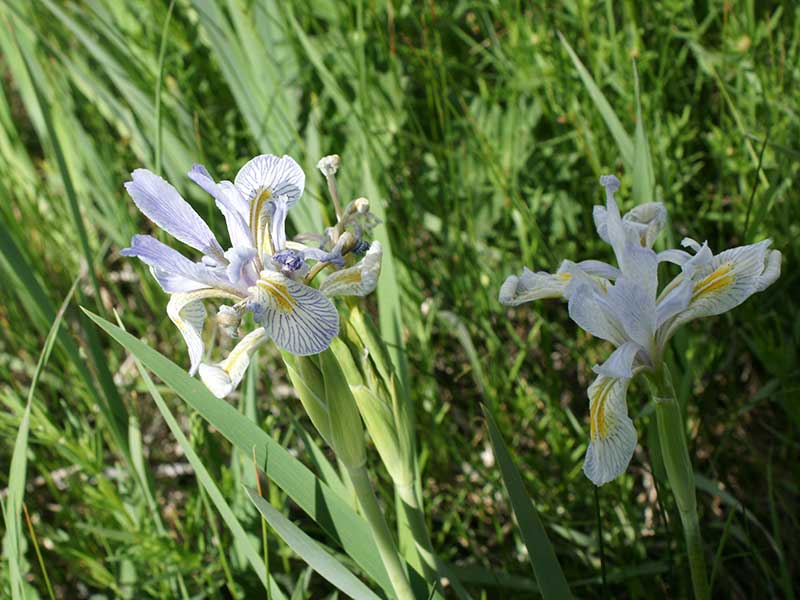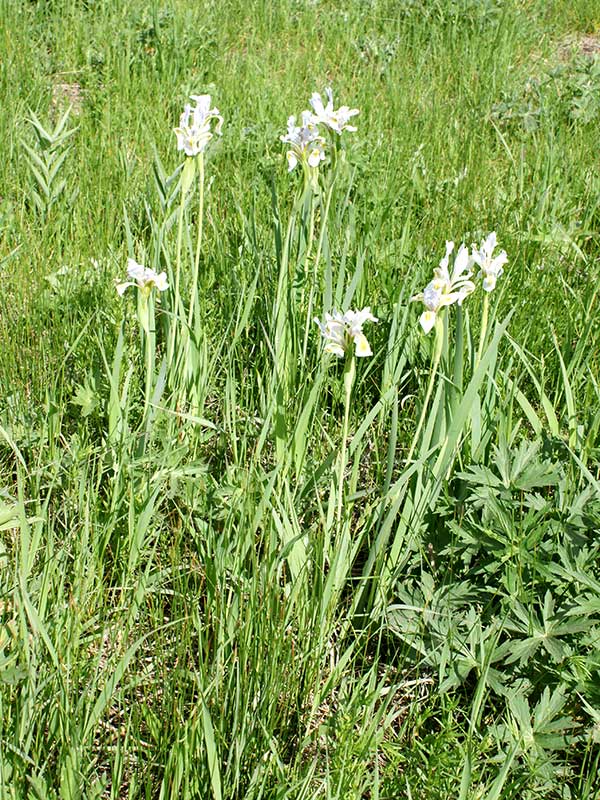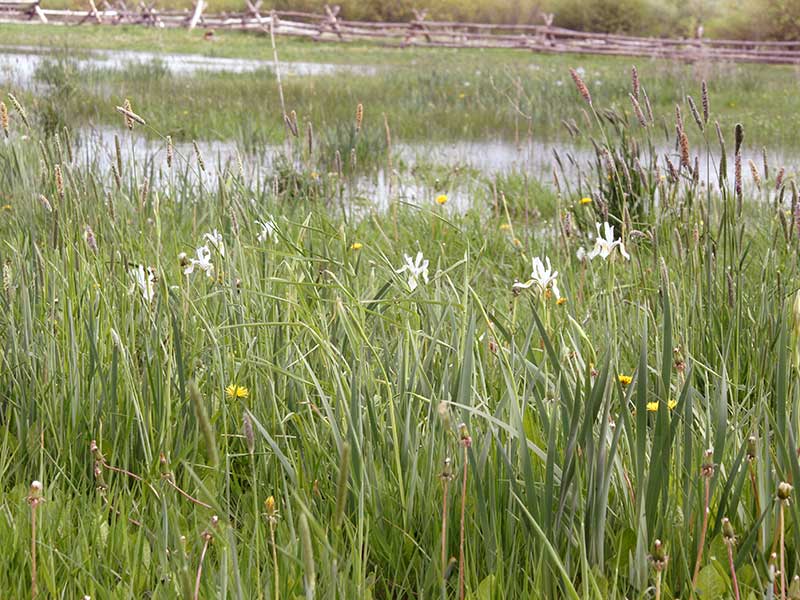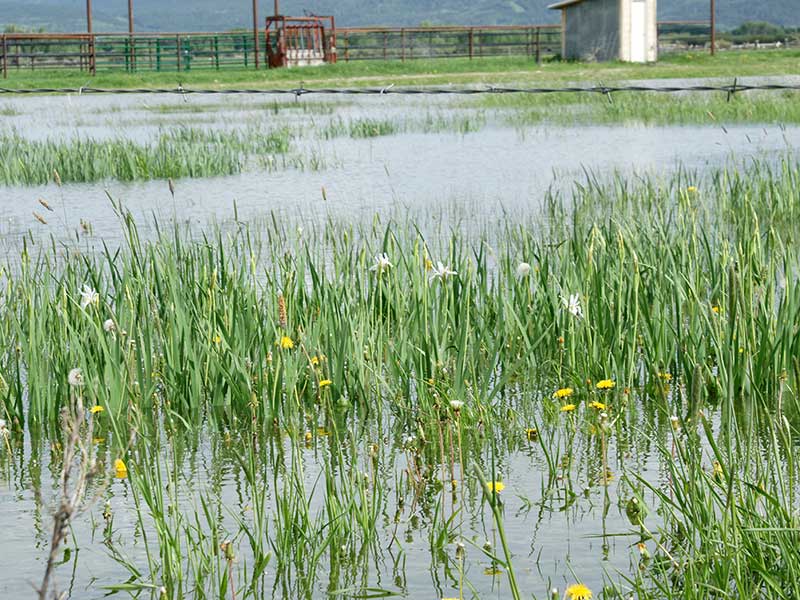Iris missouriensis / western blue flag iris
- wetland monocot – long leaves, parallel veins
- large blue flower with yellow “signal” stripe, purple veins
- 3 petals, 3 sepals make up the flower
- blooms in spring
- “like a domestic iris on a diet”
There are several Blue Flag Irises in United States. I. missouriensis is the one typically found in the western states. There is nothing else that looks like an iris and since there is only one species, this makes identification easy. As Earle and Lundin put it, the western blue flag looks like a domestic iris on a diet. Even from a distance, it is easy to see their shape and coloration, ranging from pale blue to deep blue-violet. Sometimes the “pale” is so pale that it looks white.
Closer up, three spreading petal-like sepals which make up half of the display have dark purple veins. There is a yellow stripe at the base of each, called a “signal”. While the sepals spread out, the actual petals are smaller and more upright. The petals and sepals are joined at the base in a swollen floral tube.
Western Blue Flag flowers in late spring, usually with two or three flowers on a stalk. The flowers bloom in succession rather than all at once. Around those are the stiff, light green leaves which extend two or three feet up. They arise from shallow rooted, large, branched rhizomes. Colonies can spread from these rhizomes but not very far very fast. The fruits are fairly fat capsules that produce viable seeds. These are spread by wind and water.
The western blue flag is a long-lived perennial, commonly found in wet meadows, seeps, and open woodland. This last habitat seems weird considering that we think of this as a wetland plant, but it is the most drought-tolerant of our native irises. It only actually needs moisture in the spring.
Interesting bits – The structure of the iris flower is excellent for attracting bees and making sure they get covered with pollen, at the same time making self pollination quite difficult. However, its size and nectar production make it attractive to and easy for nectar robbers to burrow in. Fortunately, growing in wetlands, it is able to produce copious amounts of nectar to satisfy both pollinators and robbers.
Finally, the name iris is from Greek mythology where Iris was goddess of the rainbow. That was, of course, only one of her jobs, since no one in Greek mythology got off that easy. It was also her job to carry the souls of dead women to the Elysian Fields. And, she was a messenger between the gods and mortals. Somehow, this involved traveling (sliding?) down the rainbow. She sort of worked for Hera and avoided Zeus, which probably led to her long term survival. As Greek goddesses go, her job and mythology were rather simple in that they didn’t involve incest, rape, deception, adultery or evil.
Wherever Iris walked on earth, iris flowers sprang up. This could account for why western blue flag is considered a weed in California and Nevada. Well, OK, probably not.
| Color | |
|---|---|
| Family | |
| Blossom size | |
| Inflorescence size | |
| Inflorescence type | |
| When? | |
| Where? | fens, moist meadows, riparian, seeps, stream banks, vernally wet areas, wet(ter) meadows, wetlands |



